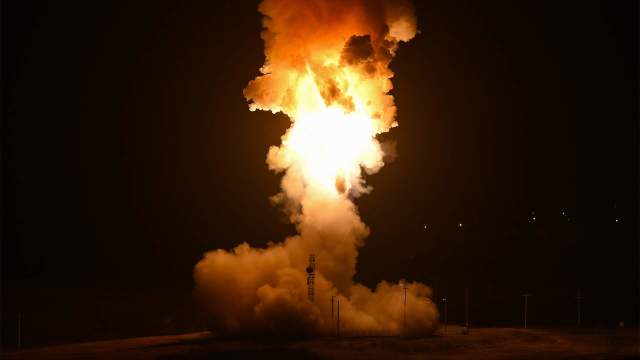And how are things with the star-spangled nuclear shield of the Americans
The failure of the launch of the American Minuteman III intercontinental ballistic missile from the Vandenberg base on the Pacific coast of the United States suggests that this is already a seriously outdated complex, which has exhausted the modernization reserve. On November 1, her tests were interrupted due to some "anomaly" during the flight. The statement was made by the US Air Force Global Operations Command. Izvestia was looking into what had happened to the American main ICBM and how things were going with one of the parts of the star-spangled nuclear shield in general.
Rocket-record holder
Strategic missiles are launched several times a year in order to check their technical condition, as well as to test some innovations in their design. More recently, similar tests of the Russian Yars ICBM, launched from the Plesetsk test site, were successful.
The American main Minuteman III rocket was launched on November 1 from the western Vandenberg missile range towards the Pacific Ocean.
Zones of possible fall of steps were announced in advance — this is an established international practice. It was clear from the zones that the launch would be carried out at an intercontinental range. After the launch, photos and videos of the rocket's flight path appeared — in the active part of the flight, when the engines are running, it can be observed by residents of many areas within a radius of hundreds of kilometers from the launch point. There is indeed some deviation at the end of the visible part of the trace — probably this is the same "anomaly".
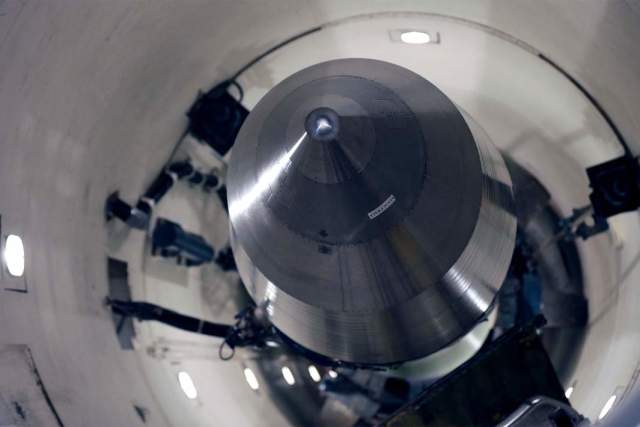
Minuteman III Missile Launch Shaft at Minot Air Force Base
Image Source: Photo: AP Photo/Charlie Riedel
The Intercontinental Minuteman III is a classic composite missile with the first, second and third marching, combat stage and a separable head with individual guidance units. The rocket stages accelerate it after launch sequentially for several minutes.
And now the US command reported that the launch was interrupted due to some "anomaly" in the behavior of the rocket in the fifth minute of flight. This means that the problems occurred at the very end of the acceleration engines — apparently, at the stage of operation of the third stage, that is, in fact, already in outer space.
Test launches of Minuteman III missiles take place once or twice a year. The previous one was successfully completed in April 2023, before that — in August 2022. In total, more than 300 launches were carried out during the service of the LGM-30G Minuteman III ICBM. And this is not surprising, because Minuteman III is a record—breaking rocket. The record holder is a long-lived person.
The threat from the mine
The program to create a new solid-fuel missile for the US Air Force with increased precision guidance of separable warheads was launched in 1965. It was developed by the Boeing concern using the experience of previously created similar Minuteman I and II missiles. By them, in the 1960s, the United States ensured the mass deployment of mine ICBMs, which laid the foundations for some quantitative superiority of the American nuclear triad.
The United States has taken the lead due to the rational use of technological superiority: solid mixed rocket fuel has made it possible to create ballistic munitions with high operational data — easy to manufacture and safe to operate.
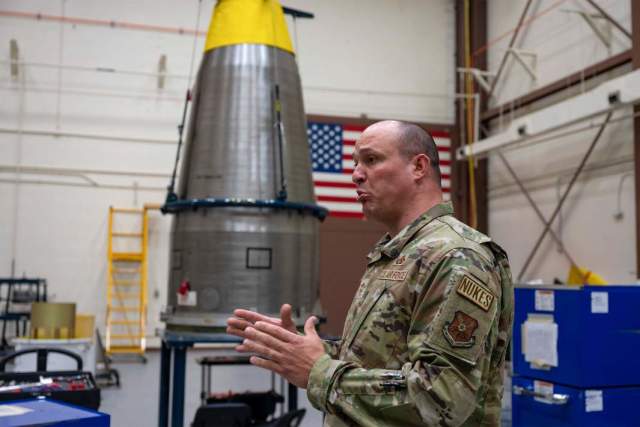
Minuteman III Intercontinental Ballistic Missile at Warren Air Force Base
Image Source: Photo: AP Photo/U.S. Air Force/Senior Airman Sarah Post
Achievements in the chemical industry, electronics, and materials science were used by the Americans, and the Soviet Union caught up with the technological level of military rocket engineering only by the 1980s, placing mainly liquid products on combat duty in the 1960s and 1970s, which had some features and disadvantages.
By the way, Dmitry Ustinov, who led the Soviet military-industrial complex in those years, did a lot to reduce our backlog and achieve parity with the United States in technology. It was he who stood at the foundations of Soviet solid-fuel rocket engineering, which eventually gave our country "Topol", "Topol-M", "Mace" and "Yars", developed by the Moscow Institute of Thermal Engineering.
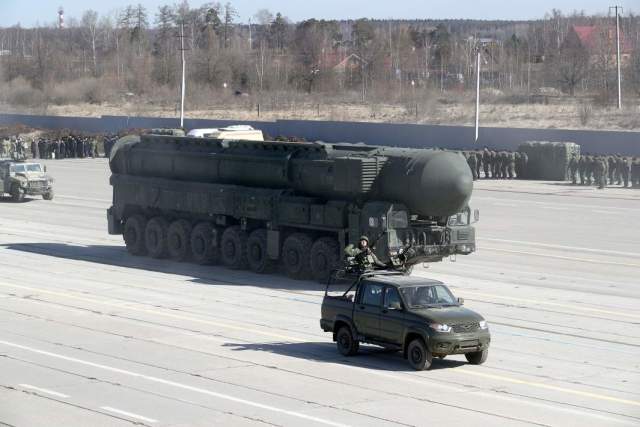
Autonomous launcher PGRK "Yars"
Image source: Photo: IZVESTIA/Dmitry Korotaev
And in many ways, our rocket scientists looked back at the turn of the 1960s and 1970s at the Minuteman III deployed overseas.
Since 1970, this missile has been in service in the United States. Its mass is 36 tons, its range is more than 9500 km. Currently, about 450 such ICBMs are on combat duty, with about 550 nuclear warheads installed on them. The missiles carry either one or three warheads with a capacity of 300 to 600 kilotons.
By 2028, a rocket should be created in the United States that will replace the Minuteman III, the LGM—35A Sentinel ("Sentinel"), the Northrop Grumman company is working on it. In terms of its capabilities, it will be close to the most advanced models of our Yars-type missiles, while the current Minuteman III is rather close to Soviet Topol-type ammunition.
Economy of "Minutemen"
Of course, having adopted them in 1970, the United States was constantly engaged in the modernization of a fairly extensive missile economy of the "Minutemen". In the 1970s and 1990s, several stages of modernization were carried out, including the complete replacement of fuel in the main stages and combat equipment.
Since the mid-1990s, a program of modernization of electronics in missile control systems has been going on without ceasing — computers, communication systems, electronic components are being replaced. Since 1998, there has been a fuel replacement program in main engines — solid fuel has a service life, after which it loses elasticity and begins to crack. Cracks in the fuel charge disrupt gorenje and can cause an explosion of the engine in flight. Of course, this leads to the fact that rockets with a service life of more than 20-25 years are sent for disposal.
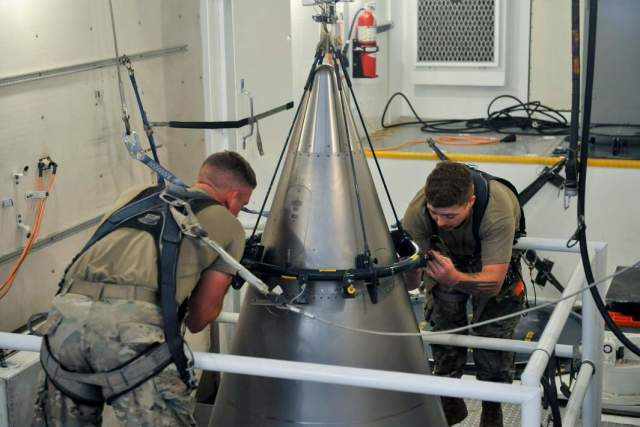
US Air Force technicians fix a titanium casing on the top of the Minuteman III intercontinental ballistic missile
Image Source: Photo: AP Photo/U.S. Air Force/John Turner
In 1997, the Minuteman III missile guidance systems update program was launched — updated missiles can receive information about targets faster and thereby accelerate their launch time if necessary.
In 2004, the United States began a program to modernize Minuteman III missile silo launchers. Further, from 2005 to 2012, a program was carried out to re-equip missiles with new more high-speed Mk21-W87 warheads with a capacity of 300 kt, which were created in the 1990s for MX missiles. The US MX missile deployment program was curtailed in 2005. As a result, the Minuteman III replaced almost everything that could be replaced in principle.
At the moment, this is the only ICBM that forms a ground component of strategic nuclear forces in the United States. Today it is already a seriously outdated complex, which has exhausted the reserve of modernization. And, as we can see, failures during test launches confirm this rather than refute it.
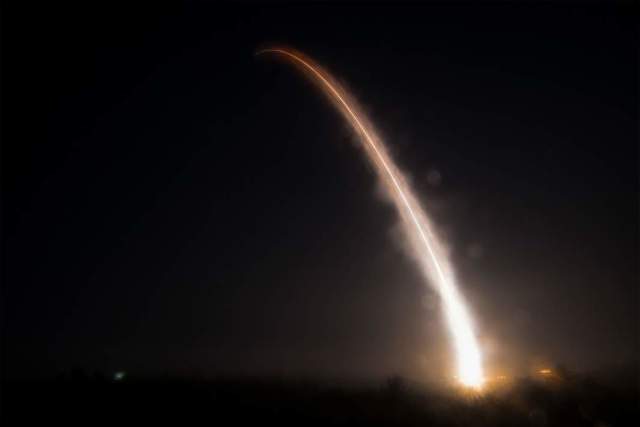
Tests of the Minuteman III intercontinental ballistic missile
Image Source: Photo: Global Look Press/ZUMAPRESS.com/U.S. Air Force
It's time to change Minuteman III to something more modern. Their mass production was discontinued in 1975 by the decision of President Carter. Then there were only modernization works. Here, of course, there is something to learn — the prudent use of scientific and technical groundwork and rocket hardware.
But from the point of view of the safety of missile weapons, it turns out that this gun may not fire at the right moment and the United States urgently needs to change it.
Dmitry Kornev
